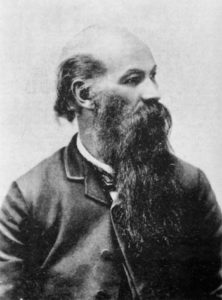
James P. Ball
*The birth of James P. Ball in 1825 is celebrated on this date. He was a free Black abolitionist, photographer, and businessman.
James Presley Ball was born in Virginia and opened a one-room studio in Cincinnati, Ohio, in 1845. One year later, Ball returned to Richmond, Virginia, and had a more successful business in a rented studio near the State Capitol building. Ball returned to Ohio in 1847 as a traveling daguerreotypist (a special field of photography) and settled in Cincinnati. There, he hired his brother (Thomas) as a studio operator. In 1852, his brother-in-law (Alexander Thomas) became a partner in the studio, and the Ball and Thomas Gallery opened for business.
In 1855, he published a pamphlet addressing the misery of slavery, from capture in Africa through the Middle Passage to bondage. He also held photo exhibitions on the experience of slavery. During the 1850s, displays of Ball’s daguerreotypes were shown at the Ohio State Fair and the Ohio Mechanics Annual Exhibition. In May of 1860, the Ball and Thomas Photographic Art Gallery was destroyed by a tornado; however, it was rebuilt with help from the community.
During the 1870s, Ball dissolved his partnership with Thomas and moved to Minneapolis, Minnesota, to open another studio. In 1887, he was the official photographer of the 25th anniversary of the Emancipation Proclamation held in Minneapolis. In October of that year, Presley relocated to Helena, Montana, where, between 1887 and 1894, he produced hundreds of photographs of the white, Black, and Chinese communities. In 1900, he moved to Seattle and opened another Globe Photo Studio studio. James Presley Ball died in 1904. His granddaughter, chemist Alice Ball, discovered the "Ball method," a cure for leprosy, in the 1920s
J.P. Ball, Daguerrean, and Studio Photographer
by Willis, Deborah (Ed.)
Garland, NY, 1993
ISBN: 0815307160